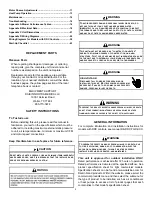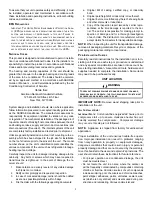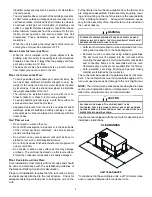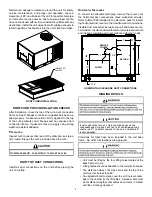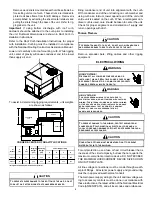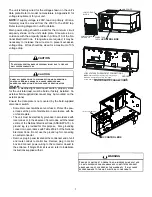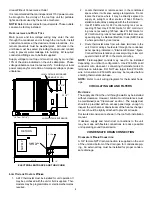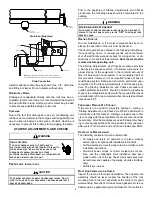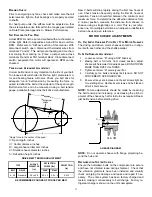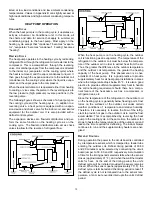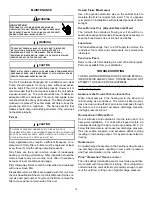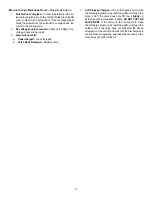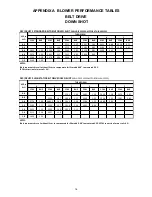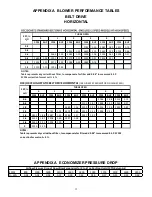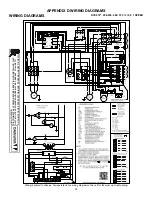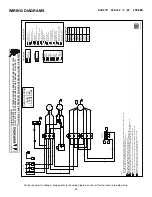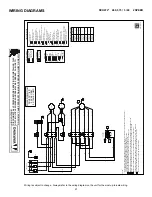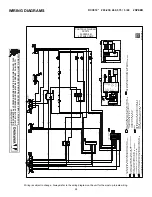
15
m
alfunCtiOning
r
eversing
v
alve
- t
his
may
be
due
tO
:
1.
Solenoid not energized
- In order to determine if the so-
lenoid is energized, touch the nut that holds the solenoid
cover in place with a screwdriver. If the nut magnetically
holds the screwdriver, the solenoid is energized and the
unit is in the cooling cycle.
2.
No voltage at unit’s solenoid
- Check unit voltage. If no
voltage, check wiring circuit.
3.
Valve will not shift:
a.
Undercharged
- check for leaks;
b.
Valve Body Damaged
- Replace valve;
c.
Unit Properly Charged
- If it is on the heating cycle, raise
the discharge pressure by restricting airflow through the
indoor coil. If the valve does not shift, tap it
lightly
on
both ends with a screwdriver handle.
DO NOT TAP THE
VALVE BODY.
If the unit is on the cooling cycle, raise
the discharge pressure by restricting airflow through the
outdoor coil. If the valve does not shift after the above
attempts, cut the unit off and wait until the discharge and
suction pressure equalize, and repeat above steps. If the
valve does not shift, replace it.


